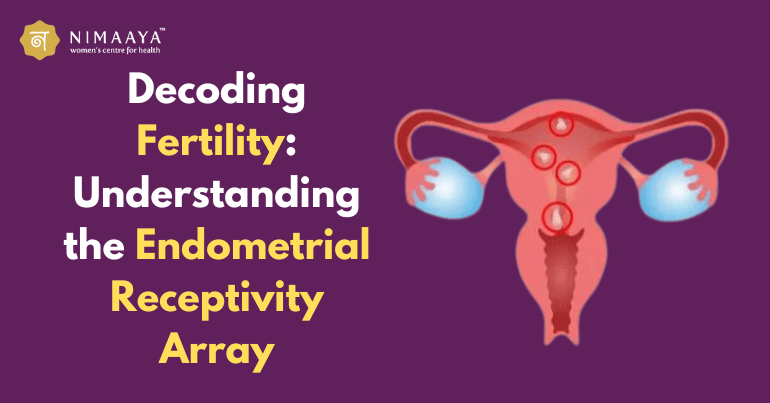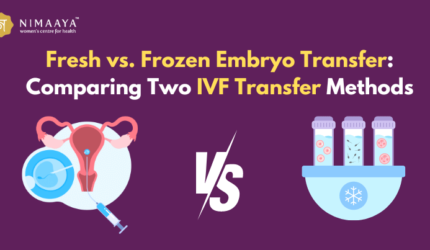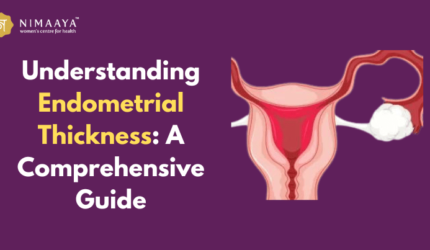While for some couples the tale may be different, for most, becoming parents is a journey full of laughter, love, and a clear picture of the future. After all, you want the best odds of a successful conception when you devote your time, faith, and financial resources to fertility treatments in hopes of starting a new chapter in your life with a healthy kid in your arms. The Endometrial receptor array (ERA Test) is a vital test in the field of assisted reproductive technology (ART) that can raise the chance of a successful conception. Unfortunately, many couples are still unaware of the ERA Test because of a lack of awareness and information. Hence, this blog carries all the vital information, including the ERA test, how it works, and what the ERA test costs in India.
What is an ERA?
Endometrial receptivity analysis is a diagnostic that evaluates the endometrial gene expression patterns to ascertain the window of receptivity for embryo implantation. To perform the test, a small endometrium biopsy is taken, and 236 genes whose expression is correlated with endometrial receptivity are examined. Such gene expression analysis helps determine the best time to transfer embryos, among other unique and insightful insights into the condition of the endometrium. The Endometrial receptivity array test goes beyond traditional methods of dating the endometrium and provides a more personalized approach to assessing receptivity.
How Does the ERA Test Work and Steal the Spotlight?
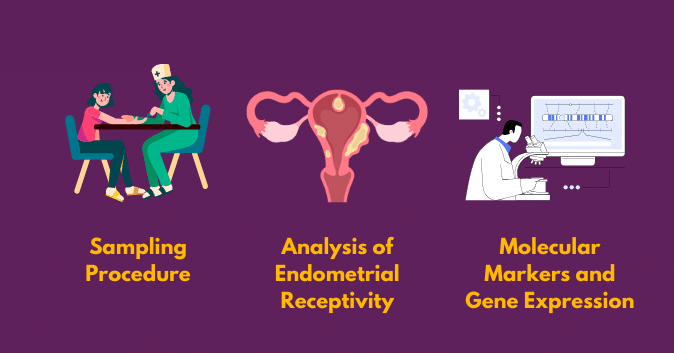
By delving deeply into the mechanics of endometrial receptivity, the Endometrial receptivity array test takes center stage. Picture it as a microscopic detective and snooping around the uterine lining to understand its receptive state. The sampling procedure is like grabbing a tiny piece of the endometrial puzzle. And the analysis? It’s like reading the endometrial diary, unraveling the molecular markers and gene expressions, and providing a detailed profile of the uterine landscape. To fully comprehend the fundamentals, follow these steps:
Step 1: Sampling Procedure
A small biopsy of the endometrial tissue is obtained, resembling a delicate snippet of the uterine story. This sample is a treasure trove, holding crucial clues about the endometrium’s receptivity. The Endometrial receptivity array test functions like a microscopic explorer, starting with a meticulous sampling procedure.
Step 2: Analysis of Endometrial Receptivity
Once the sample is in hand, the Endometrial receptivity array test embarks on a journey of analysis akin to decoding the secrets of the endometrium. This involves scrutinizing the microscopic landscape and evaluating the readiness of the uterine lining for embryo implantation. It’s a detailed examination, providing a comprehensive understanding of the endometrial receptivity window.
Step 3: Molecular Markers and Gene Expression
The ERA test functions as a genetic investigator by concentrating on molecular markers and gene expression. Examining specific markers and gene activity reveals the molecular symphony within the endometrium. These minute details provide a molecular signature that allows for unmatched precision in guiding the timing of embryo transfer. It resembles reading the fertile notes on a musical staff.
Benefits of Endometrial Receptivity Assay
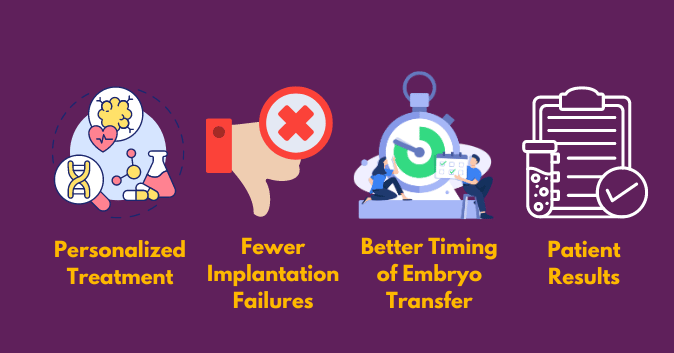
There are several advantages to the Endometrial Receptivity Assay, such as:
‣ Personalized Treatment:
The test enables physicians to develop a personalized embryo transfer plan that works best for the patient, leading to higher success rates.
‣ Fewer Implantation Failures:
The Endometrial receptivity array ensures that the endometrium is adequately receptive, reducing the chances of repeated implantation failures.
‣ Better Timing of Embryo Transfer:
The test helps determine the ideal timing for embryo transfer, improving the chances of successful conception.
‣ Better Patient Results:
Higher success rates from the ERA test procedure lessen the emotional and financial strain on the patient while also improving their overall ERA results.
Endometrial Receptivity Array Procedure
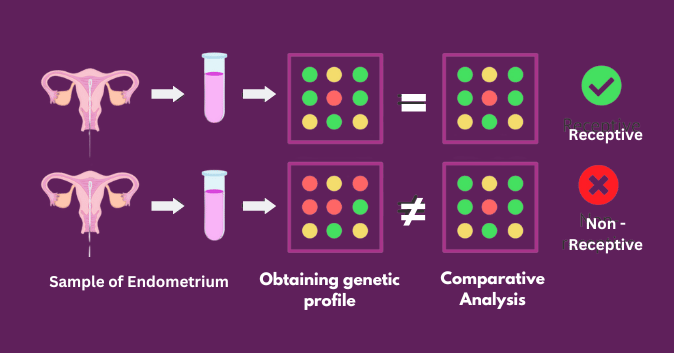
• Endometrial Biopsy
Usually, a minimally invasive endometrial biopsy precedes the Endometrial receptivity array process. In this step, a tiny sample of the woman’s endometrial tissue is taken. This biopsy is carried out either in a hormonally regulated cycle or during the woman’s menstrual cycle.
• Analysis of gene expression
Following collection, gene expression analysis is performed on the endometrial tissue. The expression levels of particular genes linked to endometrial receptivity are examined in this analysis.
• Individualised scheduling
The goal of the ERA test, according to gene expression analysis, is to determine the best window of time for embryo transfer. By transferring the embryo into the woman’s uterus at the optimal time for the endometrium to become receptive, this customized timing approach increases the likelihood of a successful pregnancy.
• Increasing the success of IVF
Women who have had multiple unsuccessful IVF cycles due to recurrent implantation failure benefit most from the Endometrial receptivity array technique. The ERA test will be performed by your healthcare provider to determine the best window of time for embryo transfer, which helps to increase the likelihood of a successful pregnancy.
• Increased Precision
The ERA test goes above and beyond conventional techniques to improve the accuracy of embryo transfer time. It tells us that endometrial receptivity varies from woman to woman and from cycle to cycle, which enables a more customized strategy to assure the success of reproductive treatment.
If you are still uncertain about the ERA test, don’t worry. We shall examine the advantages and disadvantages of the ERA test by heeding the counsel of professionals so you can make an educated choice for yourself.
Can ERA Increase IVF Success?

In IVF cycles, endometrial receptivity studies have demonstrated encouraging outcomes in raising success rates. The ERA test makes it possible to precisely determine each patient’s window of receptivity, enabling a more customized approach to the timing of embryo transfer. This customized approach increases the likelihood of successful implantation and pregnancy by ensuring that the embryo is transferred during the optimal endometrial receptivity. An ERA can be especially helpful for patients undergoing a subsequent round of IVF after an unsuccessful transfer.
How Much Does ERA Cost?
An IVF cycle costs substantially more than an ERA, which typically costs between 35 and 40,000 INR. The Endometrial receptivity array cost in India may vary depending on factors such as the clinic’s location, the complexity of the case, and any additional services provided. But at India IVF Fertility, we’re dedicated to providing our state-of-the-art procedures at the lowest feasible cost.
Recall that you should never let the expense stop you from pursuing motherhood. Our staff is available at all times to walk you through the process and go over financial details, guaranteeing transparency at every turn. Since becoming a parent is ultimately an incredibly precious joy!
Conclusion
The science behind IVF treatment is constantly evolving and making strides in overcoming infertility hurdles. One such advancement that offers couples hoping for a successful pregnancy a new lease on hope is the Endometrial receptivity array test. At Nimaaya IVF Center, we pride ourselves on being at the forefront of these advancements, offering our patients the highest standard of fertility care. So let’s come together and usher in this new era of reproductive therapies! Recall that information truly is power in the area of fertility, and the ERA test is like having a secret weapon in your toolbox. With the ERA, patients can hope for a personalized approach, leading to higher chances of successful conception and realizing their dreams of parenthood. In the process of becoming a parent, science keeps coming up with amazing tools and ideas that give people who want to grow their families new hope.

